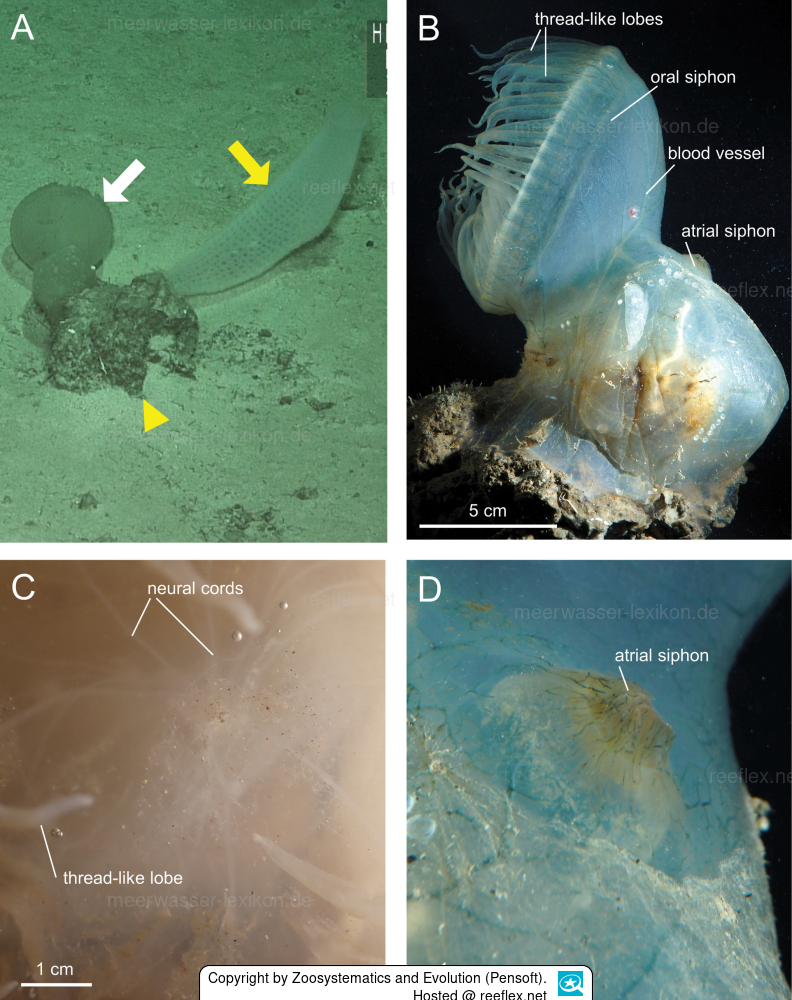Info
The animal settled in an area of accumulated sand and mud at a depth of 2027 meters, where the water temperature was 1.93 °C
The sea squirt opens its mouth in the direction of the water current.
A euplectellid sponge was also found on the same substrate. The macrobenthos in this area included other sponges, octocorals, sand crawlers, sea anemones and crinoids.
This sea squirt was about 20 cm long, including the oral siphon, and the tunic was opaque and gelatinous;
Blood vessels run along the surface of the tunic, fine tubercles, each about 0.5 mm in diameter, are evenly distributed over the entire tunic.
The posterior end of the body is attached to the substrate, which measures an enlarged mouth siphon, approx. 10 cm in diameter.
The digestive tract is located on the left side of the body, the esophagus opens on the left side of the dorso-posterior part of the pharynx.
The stomach was about 1.5 cm long, with 10 folds, surrounded by renal vesicles
Several crustaceans (probably copepods) were found in the stomach lumen.
Investigations have shown that the internal flow is triggered by ambient currents in the benthic boundary layer.
The passive current draws the prey into the inflowing siphon, where they can no longer escape from the reflective tissue folds.
Once caught, the prey are transported into the gullet by rapid pumping of the body, which is achieved by strong anterior muscles between the siphons.







 Zoosystematics and Evolution (Pensoft)
Zoosystematics and Evolution (Pensoft)

